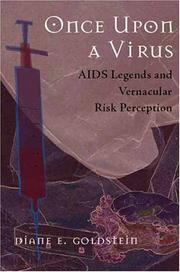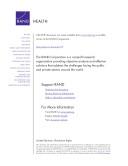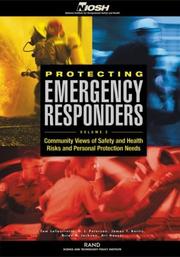| Listing 1 - 10 of 33 | << page >> |
Sort by
|

ISBN: 0874215870 9786613283382 1283283387 0874215102 9780874215106 0874215862 9780874215861 9780874215878 9781283283380 9780874215102 Year: 2004 Publisher: Logan : Utah State University Press,
Abstract | Keywords | Export | Availability | Bookmark
 Loading...
Loading...Choose an application
- Reference Manager
- EndNote
- RefWorks (Direct export to RefWorks)
Out to see America and satisfy his travel bug, W. T. Pfefferle resigned from his position as director of the writing program at Johns Hopkins University and hit the road to interview sixty-two poets about the significance of place in their work. The lively conversations that resulted may surprise with the potential meanings of a seemingly simple concept. This gathering of voices and ideas is illustrated with photo and word portraits from the road and represented with suitable poems. The poets are James Harms, David Citino, Martha Collins, Linda Gregerson, Richard Tillinghast, Or
AIDS (Disease). --- AIDS (Disease) --- Risk perception --- Health behavior --- HIV Infections --- Probability --- Behavior --- Slow Virus Diseases --- Immunologic Deficiency Syndromes --- Lentivirus Infections --- Statistics as Topic --- Sexually Transmitted Diseases, Viral --- Mathematical Concepts --- Behavior and Behavior Mechanisms --- Virus Diseases --- Immune System Diseases --- Psychiatry and Psychology --- Epidemiologic Methods --- Sexually Transmitted Diseases --- Health Care Evaluation Mechanisms --- Phenomena and Processes --- Retroviridae Infections --- Diseases --- Quality of Health Care --- Public Health --- RNA Virus Infections --- Investigative Techniques --- Analytical, Diagnostic and Therapeutic Techniques and Equipment --- Health Care Quality, Access, and Evaluation --- Environment and Public Health --- Health Care --- Acquired Immunodeficiency Syndrome --- Risk --- Health Behavior --- Health & Biological Sciences --- Communicable Diseases --- Risk perception. --- Health behavior. --- Acquired immune deficiency syndrome --- Acquired immunodeficiency syndrome --- Acquired immunological deficiency syndrome --- Behavior, Health --- Health habits --- Awareness, Risk --- Risk awareness --- HIV infections --- Immunological deficiency syndromes --- Virus-induced immunosuppression --- Habit --- Health attitudes --- Human behavior --- Medicine and psychology --- Perception --- Causes and theories of causation
Book
ISBN: 3110295466 3110295458 Year: 2013 Publisher: De Gruyter
Abstract | Keywords | Export | Availability | Bookmark
 Loading...
Loading...Choose an application
- Reference Manager
- EndNote
- RefWorks (Direct export to RefWorks)
SHARE is an international survey designed to answer the societal challenges that face us due to rapid population ageing. How do Europeans age? Under which circumstances do older people and their families live, how healthy and active are they, and how did the crisis affect them? The authors of this multidisciplinary book have taken a first step toward answering these questions based on the recent SHARE data including a new social networks module.
Human Activities --- Geographic Locations --- Demography --- Social Sciences --- Data Collection --- Health Surveys --- Adult --- Health Status --- Public Health Practice --- Sociology --- Population Characteristics --- Anthropology, Education, Sociology and Social Phenomena --- Information Science --- Public Health --- Epidemiologic Methods --- Health Care --- Age Groups --- Health Care Evaluation Mechanisms --- Epidemiologic Measurements --- Geographicals --- Quality of Health Care --- Persons --- Investigative Techniques --- Environment and Public Health --- Health Care Quality, Access, and Evaluation --- Named Groups --- Analytical, Diagnostic and Therapeutic Techniques and Equipment --- Geriatric Assessment --- Population Surveillance --- Retirement --- Europe --- Socioeconomic Factors --- Economics --- Aged --- Population Dynamics --- Business & Economics --- Population aging --- Economic aspects --- Social aspects --- Survey of Health, Ageing, and Retirement in Europe (Program) --- Aging of population --- Aging population --- Aging society --- Demographic aging --- Graying (Demography) --- Greying (Demography) --- Age distribution (Demography) --- SHARE --- S.H.A.R.E.

ISBN: 1283597268 9786613909718 0833035932 0833035274 9780833035936 9780833035271 9781283597265 6613909718 Year: 2003 Publisher: Santa Monica, CA : RAND,
Abstract | Keywords | Export | Availability | Bookmark
 Loading...
Loading...Choose an application
- Reference Manager
- EndNote
- RefWorks (Direct export to RefWorks)
Case studies of twelve existing human biospecimen repositories performed to evaluate their utility for genomics- and proteomics-based cancer research and to identify ?best practices? in collection, processing, annotation, storage, privacy, ethical concerns, informed consent, business plans, operations, intellectual property rights, public relations, marketing, and education that would be useful in designing a national biospecimen network.
Cadaver homografts--Case studies. --- Organizational Case Studies--United States. --- Preservation of organs, tissues, etc.--Case studies. --- Tissue banks--Case studies. --- Tissue Banks--standards--United States. --- Tissue Preservation--methods--United States. --- Health Care Evaluation Mechanisms --- Histocytological Preparation Techniques --- Preservation, Biological --- Health Services Research --- Biological Specimen Banks --- Quality of Health Care --- Investigative Techniques --- Cytological Techniques --- Specimen Handling --- Health Planning --- Histological Techniques --- Health Facilities --- Laboratory Techniques and Procedures --- Health Care Economics and Organizations --- Clinical Laboratory Techniques --- Health Care Facilities, Manpower, and Services --- Health Care Quality, Access, and Evaluation --- Analytical, Diagnostic and Therapeutic Techniques and Equipment --- Health Care --- Diagnosis --- Tissue Preservation --- Tissue Banks --- Organizational Case Studies --- Surgery & Anesthesiology --- Health & Biological Sciences --- Transplantation of Organs & Tissues --- Tissue banks --- Preservation of organs, tissues, etc. --- Cadaver homografts --- Post-mortem homografts --- Postmortem homografts --- Organ preservation (Anatomy) --- Organs (Anatomy) --- Banks, Organ --- Banks, Tissue --- Banks, Transplant --- Organ banks --- Transplant banks --- Preservation --- Homografts --- Non-heart-beating organ donation --- Transplantation of organs, tissues, etc. --- Biobanks --- Health facilities --- Procurement of organs, tissues, etc.
Book
ISBN: 083307797X 0833077996 0833077902 9780833077998 9780833077974 9780833077981 0833077988 9780833077905 Year: 2013 Publisher: Santa Monica, CA : RAND Corporation,
Abstract | Keywords | Export | Availability | Bookmark
 Loading...
Loading...Choose an application
- Reference Manager
- EndNote
- RefWorks (Direct export to RefWorks)
As a step toward improving its health information technology (IT) interoperability, the Military Health System is seeking to develop a research roadmap to better coordinate health IT research efforts, address IT capability gaps, and reduce programmatic risk for its enterprise projects. This report identifies gaps in research, policy, and practice involving patient privacy, consent, and identity management that need to be addressed to improve the quality and efficiency of care through health information exchange.
Medical informatics -- United States. --- Medical records -- Access control -- United States. --- Medicine, Military -- United States -- Information services. --- United States -- Armed Forces -- Medical care. --- Medical records --- Medicine, Military --- Medical informatics --- Information storage and retrieval systems --- Records as Topic --- Informatics --- Medical Informatics Applications --- Information Science --- Medicine --- Organization and Administration --- Health Occupations --- Data Collection --- Health Care Evaluation Mechanisms --- Epidemiologic Methods --- Health Services Administration --- Disciplines and Occupations --- Investigative Techniques --- Health Care --- Public Health --- Quality of Health Care --- Environment and Public Health --- Analytical, Diagnostic and Therapeutic Techniques and Equipment --- Health Care Quality, Access, and Evaluation --- Medical Informatics --- Medical Records --- Information Systems --- Military Medicine --- Health & Biological Sciences --- Medical & Biomedical Informatics --- Access control --- Information services --- Medical care --- Medical care. --- Information services. --- United States --- Armed Forces --- Military medicine --- Medicine, Naval --- Military hospitals --- Military hygiene --- War --- Medical aspects --- Relief of sick and wounded --- Data processing
Book

ISBN: 1282940384 9786612940385 0833050141 0833050052 9780833050144 9780833050052 9781282940383 6612940387 Year: 2010 Publisher: Santa Monica, CA : RAND,
Abstract | Keywords | Export | Availability | Bookmark
 Loading...
Loading...Choose an application
- Reference Manager
- EndNote
- RefWorks (Direct export to RefWorks)
The ability to measure emergency preparedness - to predict the likely performance of emergency response systems in future events - is critical for policy analysis in homeland security. Yet it remains difficult to know how prepared a response system is to deal with large-scale incidents, whether it be a natural disaster, terrorist attack, or industrial or transportation accident. This research draws on the fields of systems analysis and engineering to apply the concept of system reliability to the evaluation of emergency response systems. The authors describe a method for modeling an emergency response system; identifying how individual parts of the system might fail; and assessing the likelihood of each failure and the severity of its effects on the overall response effort. The authors walk the reader through two applications of this method: a simplified example in which responders must deliver medical treatment to a certain number of people in a specified time window, and a more complex scenario involving the release of chlorine gas. The authors also describe an exploratory analysis in which they parsed a set of after-action reports describing real-world incidents, to demonstrate how this method can be used to quantitatively analyze data on past response performance. The authors conclude with a discussion of how this method of measuring emergency response system reliability could inform policy discussion of emergency preparedness, how system reliability might be improved, and the costs of doing so. --From publisher description.
Assistance in emergencies -- United States. --- Emergency communication systems -- United States. --- Emergency management -- United States -- Evaluation. --- Incident command systems -- United States. --- Preparedness -- Evaluation. --- Emergency management --- Preparedness --- Incident command systems --- Assistance in emergencies --- Emergency communication systems --- Program Evaluation --- Emergencies --- Disaster Planning --- Evaluation Studies as Topic --- Health Care Evaluation Mechanisms --- Quality of Health Care --- Disease Attributes --- Disasters --- Public Health --- Investigative Techniques --- Environment --- Health Services Administration --- Pathologic Processes --- Environment and Public Health --- Health Care Quality, Access, and Evaluation --- Analytical, Diagnostic and Therapeutic Techniques and Equipment --- Health Care --- Pathological Conditions, Signs and Symptoms --- Diseases --- Social Welfare & Social Work - General --- Social Welfare & Social Work --- Social Sciences --- Evaluation --- Evaluation. --- Emergency assistance --- Failure to assist in emergencies --- Unified command (Emergency management) --- Unified command systems (Emergency management) --- Readiness --- Bystander effect --- Reliability

ISBN: 0833032429 0833029975 9780833032423 9780833029973 Year: 2001 Publisher: Santa Monica, Calif. : RAND,
Abstract | Keywords | Export | Availability | Bookmark
 Loading...
Loading...Choose an application
- Reference Manager
- EndNote
- RefWorks (Direct export to RefWorks)
An estimated five million US children have asthma. This report argues that many asthma attacks could be avoided - and much suffering prevented and many medical costs saved - if more children received good-quality, ongoing asthma care.
Asthma in children. --- Asthma in children - Government policy - United States. --- Asthma in children --- Asthma --- Treatment Outcome --- Health Policy --- Child --- Public Policy --- Respiratory Hypersensitivity --- Prognosis --- Bronchial Diseases --- Outcome Assessment (Health Care) --- Lung Diseases, Obstructive --- Age Groups --- Persons --- Outcome and Process Assessment (Health Care) --- Lung Diseases --- Respiratory Tract Diseases --- Social Control Policies --- Diagnosis --- Hypersensitivity, Immediate --- Quality of Health Care --- Hypersensitivity --- Diseases --- Policy --- Analytical, Diagnostic and Therapeutic Techniques and Equipment --- Social Control, Formal --- Named Groups --- Health Care Evaluation Mechanisms --- Immune System Diseases --- Health Care Economics and Organizations --- Social Sciences --- Health Services Administration --- Sociology --- Health Care --- Health Care Quality, Access, and Evaluation --- Anthropology, Education, Sociology and Social Phenomena --- Pediatrics --- Medicine --- Health & Biological Sciences --- Government policy --- Childhood asthma --- Allergy in children --- Pediatric respiratory diseases

ISBN: 1282081608 9786612081606 0833044443 0833042173 9780833044440 9780833042170 Year: 2007 Publisher: Santa Monica, CA : RAND Health,
Abstract | Keywords | Export | Availability | Bookmark
 Loading...
Loading...Choose an application
- Reference Manager
- EndNote
- RefWorks (Direct export to RefWorks)
Updates the policy context of the Agency for Healthcare Research and Quality (AHRQ) patient safety initiative; documents the current priorities and activities undertaken; and assesses contributions of health information technology projects and dissemination actions to support adoption of evidence-based safe practices. Discusses implications for future AHRQ policy, programming, and research; suggests ways to strengthen AHRQ activities.
Iatrogenic diseases -- Prevention -- Government policy -- United States. --- Medical errors -- Prevention -- Government policy -- United States. --- Patients -- United States -- Safety measures. --- Medical errors --- Iatrogenic diseases --- Patients --- Evaluation Studies as Topic --- Health Care Evaluation Mechanisms --- Epidemiologic Methods --- Quality of Health Care --- Information Science --- Health Services --- Communication --- Publication Formats --- North America --- Social Sciences --- Investigative Techniques --- Behavior --- Health Care Facilities, Manpower, and Services --- Public Health --- Publication Characteristics --- Health Services Administration --- Anthropology, Education, Sociology and Social Phenomena --- Americas --- Health Care Quality, Access, and Evaluation --- Geographic Locations --- Analytical, Diagnostic and Therapeutic Techniques and Equipment --- Health Care --- Environment and Public Health --- Behavior and Behavior Mechanisms --- Geographicals --- Psychiatry and Psychology --- Technical Report --- Information Dissemination --- Data Collection --- Government Programs --- United States --- Outcome and Process Assessment (Health Care) --- Program Evaluation --- Medical Errors --- Medicine --- Health & Biological Sciences --- Medical Professional Practice --- Prevention --- Government policy --- Safety measures --- Safety measures. --- Errors, Medical --- Medical mishaps --- Mishaps, Medical --- Persons --- Sick --- Diseases --- Therapeutics --- Errors, Scientific --- Complications --- Practice
Book
ISBN: 1282451286 9786612451287 0833048198 0833045598 9780833048196 9781282451285 9780833045591 6612451289 Year: 2008 Publisher: Santa Monica, CA : RAND,
Abstract | Keywords | Export | Availability | Bookmark
 Loading...
Loading...Choose an application
- Reference Manager
- EndNote
- RefWorks (Direct export to RefWorks)
Current integrative medicine practices in hospital settings involve some form of partnership between complementary and alternative medicine and biomedicine. This five-year study adopted a longitudinal methodology to track the establishment of a single hospital-based Integrative Medicine Center. Using extensive qualitative interview data, the project staff conducted a stakeholder analysis of all participants involved in the establishment and continuation of the Integrative Medicine Center and collected data from hospital documents, patient files, patient questionnaires and provider questionnair
Hospitals --United States --Planning --Case studies. --- Integrative medicine. --- Integrative medicine --- Hospitals --- Hospital Administration --- United States --- Complementary Therapies --- Delivery of Health Care, Integrated --- Organizational Case Studies --- Hospital Planning --- Health Services Research --- Organization and Administration --- North America --- Health Care Evaluation Mechanisms --- Health Occupations --- Health Facilities --- Delivery of Health Care --- Health Facility Administration --- Health Facility Planning --- Therapeutics --- Health Planning --- Analytical, Diagnostic and Therapeutic Techniques and Equipment --- Health Care Facilities, Manpower, and Services --- Americas --- Patient Care Management --- Regional Health Planning --- Health Care Quality, Access, and Evaluation --- Disciplines and Occupations --- Health Services Administration --- Quality of Health Care --- Health Care --- Health Care Economics and Organizations --- Geographic Locations --- Geographicals --- Alternative Medicine --- Medicine --- Health & Biological Sciences --- Planning --- Benevolent institutions --- Infirmaries --- Medical pluralism --- Health facilities --- Alternative medicine

ISBN: 0833036033 1417506687 083303295X 9781417506682 9780833036032 9780833032959 Year: 2003 Publisher: Santa Monica, CA : Rand,
Abstract | Keywords | Export | Availability | Bookmark
 Loading...
Loading...Choose an application
- Reference Manager
- EndNote
- RefWorks (Direct export to RefWorks)
Firefighters, law enforcement officers, and emergency medical service responders play a critical role in protecting people and property in the event of fires, medical emergencies, terrorist acts, and numerous other emergencies. The authors examine the hazards that responders face and the personal protective technology needed to contend with those hazards. The findings are based on in-depth discussions with 190 members of the emergency responder community and are intended to help define the protective technology needs of responders and develop a comprehensive personal protective technology re
Emergency medical personnel. --- Employees--Safety measures--Congresses. --- Industrial safety--Congresses. --- Protective clothing. --- Accident Prevention --- Risk --- Epidemiologic Measurements --- Risk Management --- Allied Health Personnel --- Medicine --- Disasters --- Probability --- Organization and Administration --- Environment --- Health Occupations --- Public Health --- Accidents --- Health Personnel --- Emergency Medical Technicians --- Risk Assessment --- Safety --- Emergency Medicine --- Rescue Work --- Statistics as Topic --- Environment and Public Health --- Health Care Facilities, Manpower, and Services --- Occupational Groups --- Health Services Administration --- Disciplines and Occupations --- Persons --- Health Care --- Epidemiologic Methods --- Health Care Evaluation Mechanisms --- Quality of Health Care --- Investigative Techniques --- Named Groups --- Analytical, Diagnostic and Therapeutic Techniques and Equipment --- Health Care Quality, Access, and Evaluation --- Health & Biological Sciences --- Emergency Medical Services --- Emergency medical personnel --- Fire fighters --- Police --- Safety measures. --- Cops --- Gendarmes --- Law enforcement officers --- Officers, Law enforcement --- Officers, Police --- Police forces --- Police officers --- Police service --- Policemen --- Policing --- Firefighters --- Firemen --- Medical emergency personnel --- Legal status, laws, etc. --- Criminal justice, Administration of --- Criminal justice personnel --- Peace officers --- Public safety --- Security systems --- Fire departments --- Emergency medical services --- Emergency medicine --- Medical personnel --- Officials and employees
Book
ISBN: 0833044303 0833042912 9780833044303 9780833042910 Year: 2008 Publisher: Santa Monica, Ca : Rand Corp.,
Abstract | Keywords | Export | Availability | Bookmark
 Loading...
Loading...Choose an application
- Reference Manager
- EndNote
- RefWorks (Direct export to RefWorks)
The skills required of military medical personnel differ during deployment and peacetime. This study explored the possibility of stationing personnel in nonmilitary settings where the case mix might more closely resemble that under deployment.
Medicine, Military --- Manpower planning --- Epidemiologic Study Characteristics as Topic --- Health Personnel --- Organization and Administration --- Evaluation Studies as Topic --- Models, Theoretical --- Medicine --- Quality of Health Care --- Professional Competence --- Health Care Facilities, Manpower, and Services --- Health Services Administration --- Health Care Evaluation Mechanisms --- Investigative Techniques --- Health Occupations --- Occupational Groups --- Epidemiologic Methods --- Educational Measurement --- Persons --- Health Care --- Analytical, Diagnostic and Therapeutic Techniques and Equipment --- Disciplines and Occupations --- Education --- Public Health --- Health Care Quality, Access, and Evaluation --- Named Groups --- Environment and Public Health --- Anthropology, Education, Sociology and Social Phenomena --- Feasibility Studies --- Military Medicine --- Clinical Competence --- Models, Organizational --- Medical Staff --- United States. --- Personnel management. --- D.O.D. --- DOD (Department of Defense) --- Mei-kuo kuo fang pu --- Ministerstvo oborony SShA --- Министерство обороны США --- National Military Establishment (U.S.)
| Listing 1 - 10 of 33 | << page >> |
Sort by
|

 Search
Search Feedback
Feedback About UniCat
About UniCat  Help
Help News
News